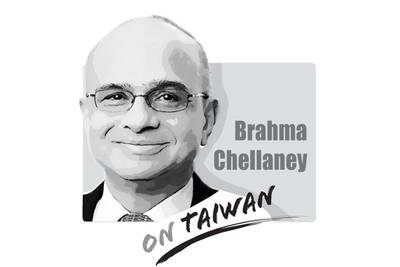On Sunday, Taipei's oldest food market, the Jiancheng Circle (
Following a massive and expensive renovation by the Taipei City Government, the building, which had stood on the site for 98 years, is gone and, along with it, a cultural and historical landmark that had served Taipei residents as well as visitors from other parts of the country and abroad.
While many lament the market's closure, its demise also highlights Taipei Mayor Ma Ying-jeou's (
In an attempt to modernize the decades-old market, Ma ordered the demolition of the food circle in March 2001 and had the Taipei City Government spend lots of money to renovate the market.
However, the resulting structure failed to live up to its theme -- the circle of life -- based on the design by Taiwanese architect C.Y. Lee (
In Ma's view, the two-story cylindrical glass building that re-opened in October 2003 was a testament to the beauty and wonder of modern architecture, which did away with the aged, congested, disorderly array of vendors and stalls that filled the old market.
However, to the eyes of many Taipei residents, especially those living nearby, it was a cold, glass monster that bore no trace of the market's good and familiar architectural style, history and culture.
To top it all, the renovated structure neglected the very element that had made the night market fun and memorable -- the priceless local touch that's distinctly Taiwanese in flavor. It might have been a little crowded, slightly filthy or a bit shabby, but it had a distinctly warm, human element.
Ma probably meant well when he sought to improve the old Jiancheng Circle.
But the ironic part is that the very effort by the Taipei City Government to modernize the time-honored market was the least progressive idea of all.
Sure, the Jiancheng Circle was not a glamour house like Taipei 101, nor did it resemble anything like the upscale shoeboxes that hawk brandname items in the Xinyi commercial district.
But old does not always mean outdated, nor does everything new equate with progress.
Having survived two fires -- one in 1993 and another in 1999 -- the market remained a very visible city landmark. It was one of the most popular night markets since the Japanese colonial era, where generations shared fond memories of childhood afternoon snack-runs, young people dating or a family night out.
While Ma wasn't the architect of the new building, he contributed to its failure and decline.
Like any good manager or marketer, he should know that the key to selling something is to tailor it to what people want, and not what he thinks they want.
After all, a mayor is elected to serve the people and not his own personal agenda.
While Ma may view his two-term mayoral tenure as a step to a higher political post, he is off to a bad start if after living on this soil for decades, he still can't identify what the Taiwanese want or need.
The government and local industries breathed a sigh of relief after Shin Kong Life Insurance Co last week said it would relinquish surface rights for two plots in Taipei’s Beitou District (北投) to Nvidia Corp. The US chip-design giant’s plan to expand its local presence will be crucial for Taiwan to safeguard its core role in the global artificial intelligence (AI) ecosystem and to advance the nation’s AI development. The land in dispute is owned by the Taipei City Government, which in 2021 sold the rights to develop and use the two plots of land, codenamed T17 and T18, to the
US President Donald Trump has announced his eagerness to meet North Korean leader Kim Jong-un while in South Korea for the APEC summit. That implies a possible revival of US-North Korea talks, frozen since 2019. While some would dismiss such a move as appeasement, renewed US engagement with North Korea could benefit Taiwan’s security interests. The long-standing stalemate between Washington and Pyongyang has allowed Beijing to entrench its dominance in the region, creating a myth that only China can “manage” Kim’s rogue nation. That dynamic has allowed Beijing to present itself as an indispensable power broker: extracting concessions from Washington, Seoul
Taiwan’s labor force participation rate among people aged 65 or older was only 9.9 percent for 2023 — far lower than in other advanced countries, Ministry of Labor data showed. The rate is 38.3 percent in South Korea, 25.7 percent in Japan and 31.5 percent in Singapore. On the surface, it might look good that more older adults in Taiwan can retire, but in reality, it reflects policies that make it difficult for elderly people to participate in the labor market. Most workplaces lack age-friendly environments, and few offer retraining programs or flexible job arrangements for employees older than 55. As

Donald Trump’s return to the White House has offered Taiwan a paradoxical mix of reassurance and risk. Trump’s visceral hostility toward China could reinforce deterrence in the Taiwan Strait. Yet his disdain for alliances and penchant for transactional bargaining threaten to erode what Taiwan needs most: a reliable US commitment. Taiwan’s security depends less on US power than on US reliability, but Trump is undermining the latter. Deterrence without credibility is a hollow shield. Trump’s China policy in his second term has oscillated wildly between confrontation and conciliation. One day, he threatens Beijing with “massive” tariffs and calls China America’s “greatest geopolitical